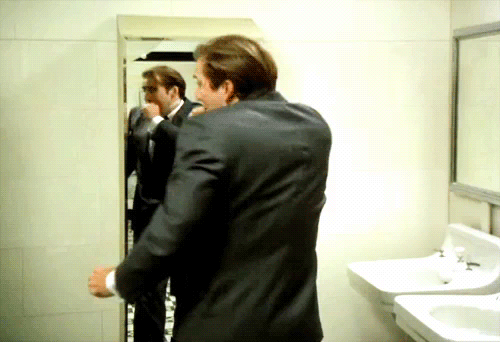Tags: Michael A. Stackpole; Wasteland
Oh my, too many news today. Still, this one is definitely worth posting. Michael A. Stackpole has penned a guest blog post for RockPaperShotgun on the making of the original Wasteland:
Be sure to read this good shit in full.
Oh my, too many news today. Still, this one is definitely worth posting. Michael A. Stackpole has penned a guest blog post for RockPaperShotgun on the making of the original Wasteland:
One of the key reasons Wasteland innovated all over the place is because Ken and I, and to a lesser extent Alan, had never done a game like this before. From my COLECO days, and time spent at Flying Buffalo, Inc., I’d learned how to understand programmers; and Alan was up for any challenge we tossed at him. Because we were wandering into the unknown, adding skills to a game where skills had never existed before, and doing other unique stuff, there were no boundaries we couldn’t cross. There was never a “No, we can’t do that,” dictum; but a “let’s figure out how to make that work” ethic that really defined the whole project.
While Alan and I were working out details of the system, other folks were coding maps. We were doing this decidedly old-school. Ken was working on a C64, I was using an old Osborne computer. We’d generate text files which Alan would turn into map code; and the maps themselves were drawn on graph paper and someone at Interplay put them together. Because we had limited space for each map, we got really tricky with spacing. Looking back I’m surprised we managed to jam as much as we did into each map.
Work fell into a normal pattern. Alan and I would work details out, I’d pass it down the line to the folks designing maps. If they had problems, they’d tell me, Alan and I would discuss things, and they’d get an answer. In this way the practical problems of scenario design directly influenced the game system and vice versa. Map designers even talked amongst themselves, sharing strategies and some of these became standard routines we all later used.
[...]
The maps I designed comprised roughly the last third of the game: everything after Las Vegas. I also did the Guardians of the Old Order maps. As a result, I was able to play through the first part of the game and really enjoyed it. It was my first experience with that whole “just one more turn” aspect of a game. The storytelling and personalities in the game, along with the multiple keys to every puzzle aspect of it, made me want to stay in the world just a little bit longer.
While Alan and I were working out details of the system, other folks were coding maps. We were doing this decidedly old-school. Ken was working on a C64, I was using an old Osborne computer. We’d generate text files which Alan would turn into map code; and the maps themselves were drawn on graph paper and someone at Interplay put them together. Because we had limited space for each map, we got really tricky with spacing. Looking back I’m surprised we managed to jam as much as we did into each map.
Work fell into a normal pattern. Alan and I would work details out, I’d pass it down the line to the folks designing maps. If they had problems, they’d tell me, Alan and I would discuss things, and they’d get an answer. In this way the practical problems of scenario design directly influenced the game system and vice versa. Map designers even talked amongst themselves, sharing strategies and some of these became standard routines we all later used.
[...]
The maps I designed comprised roughly the last third of the game: everything after Las Vegas. I also did the Guardians of the Old Order maps. As a result, I was able to play through the first part of the game and really enjoyed it. It was my first experience with that whole “just one more turn” aspect of a game. The storytelling and personalities in the game, along with the multiple keys to every puzzle aspect of it, made me want to stay in the world just a little bit longer.
Be sure to read this good shit in full.







![Have Many Potato [2013] Codex 2013](/forums/smiles/campaign_tags/campaign_potato2013.png)
![The Year of Incline [2014] Codex 2014](/forums/smiles/campaign_tags/campaign_incline2014.png)

















 Nice to hear, but I hope Civilization 5 didn't suck him in, as it is utter boring garbage, even as a timesink. Even Civ 4 is better.
Nice to hear, but I hope Civilization 5 didn't suck him in, as it is utter boring garbage, even as a timesink. Even Civ 4 is better.

